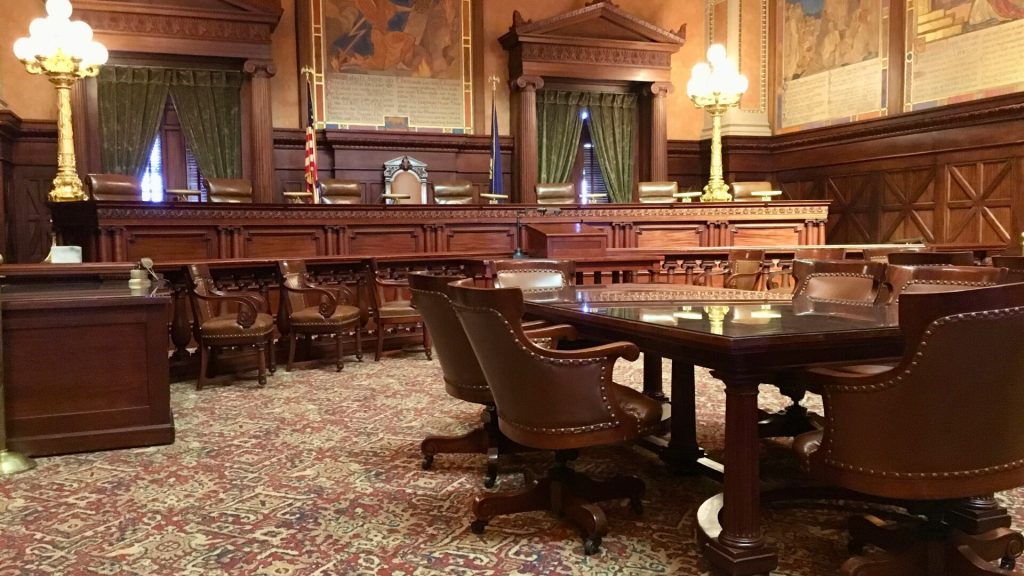A new ruling by the Pennsylvania Supreme Court is challenging a 40-year state law prohibiting the use of Medicaid funds for abortions – but that’s not all. It’s also challenging the SCOTUS’s 2022 decision to overturn Roe v. Wade (1973). Let’s dive through 50 years of history to see how we ended up here, and what Pennsylvania’s ruling means for future generations.
1971: Pennsylvania Adds Equal Rights Amendment To State Constitution
In 1971, Pennsylvania became the first state in the United States to add an Equal Rights Amendment to its state Constitution. Utah and Wyoming were the only two states with equal rights provisions, but those provisions were written into the Constitution – not amended to it.

Pennsylvania’s amendment was as straightforward as it gets: “Equality of rights under the law shall not be abridged in the Commonwealth of Pennsylvania because of the sex of the individual.” Unfortunately, this amendment has caused a great deal of controversy over the past 50 years.
1973: Abortion Deemed Legal Thanks To Roe v. Wade Ruling
Two years after the amendment was signed, the Supreme Court of the United States (SCOTUS) ruled that abortions were legal (federally) and protected by the due process clause in the 14th Amendment of the US Constitution. The due process clause ‘prohibits states from depriving any person of life, liberty, or property without due process of law.’

The SCOTUS issued a 7-2 decision in favor of abortion rights – arguing that the due process clause includes a ‘right to privacy’ that prohibits the federal government from interfering with an individual’s decisions regarding their body – including abortion. As such, the right to an abortion was deemed a ‘liberty’ under the Constitution.
1982: PA Abortion Control Act Restricts Medicaid Access For Abortions
The Roe v. Wade decision made abortion legal, but it didn’t take long for states to join in with legislation of their own – most of which were an attempt to make abortion harder to access. One of those legislations was the Pennsylvania Abortion Control Act of 1982.

The Abortion Control Act prohibited the use of Medicaid for abortions and/or abortion-related care – unless it was an instance of rape, incest, or it threatens the mother’s life. It also introduced the ’24-hour waiting period’ before undergoing the procedure, required parental consent for minors, and required married women to notify their husbands first.
1985: PA Supreme Court Rules In Favor Of Abortion Control Act
In 1985, the Abortion Control Act was challenged, but upheld with a majority ruling in Fischer v. Department of Public Welfare. Those who opposed the Abortion Control Act wanted abortions covered by Medicaid insurance, while those who were for the Act were against using taxpayer funds to help pay for abortions.

The Pennsylvania Supreme Court ultimately ruled in favor of the Abortion Control Act – meaning abortions wouldn’t be covered by Medicaid. The ruling would remain in place for nearly 40 years, but was recently overturned by the PA Supreme Court last week – more on that below.
1992: The SCOTUS Upholds Roe v. Wade Decision
In 1992, abortion clinics and physicians in Pennsylvania challenged the Abortion Control Act in Planned Parenthood of Southeastern Pennsylvania v. Casey. It didn’t question the Medicaid issue, but it challenged the other three requirements – parental consent, notifying husbands, and the ’24-hour waiting period’ – and whether they infringed on a person’s right to abortion.

The Supreme Court of the United States issued a 5-4 decision that upheld Roe v. Wade – reaffirming an individual’s right to abortion – and upheld two of the three provisions listed above. The only provision not to survive was the one requiring that the husband be notified before an abortion take place.
2019: PA Abortion Providers File Lawsuit Regarding Medicaid Access
In 2019, eight abortion providers in Pennsylvania (spearheaded by the Allegheny Reproductive Health Center) filed a lawsuit against the Pennsylvania Department of Human Services. They challenged the 1985 ruling that prohibited the use of Medicaid for abortions – arguing that it violated the Equal Rights Amendment in the PA Constitution.

The case was initially heard in front of a Pennsylvania Commonwealth Court, but the lawsuit was dismissed on the grounds that the providers ‘lacked legal standing to make constitutional claims.’ Not willing to give up, the providers took their argument in front of the Pennsylvania Supreme Court – more on that below.
2022: US Supreme Court Overturns Roe v. Wade
In 2022, the Supreme Court of the United States issued one of the most controversial, yet historic decisions in the history of the high court. With five Justices on board, the Supreme Court officially overturned the 1973 Roe v. Wade ruling – allowing states to issue their own abortion restrictions, free of regulation.

The majority opinion was authored by Justice Samuel Alito, who was joined by Justices Neil Gorsuch, Clarence Thomas, Brett Kavanaugh, and Amy Coney Barrett. The states wasted no amount of time creating their own laws – either banning, legalizing, or restricting abortion across the country.
2024: PA Supreme Court Challenges Dobbs v. Jackson Ruling
In Oct. 2022, a few months after Roe v. Wade was overturned, the Pennsylvania Supreme Court heard oral arguments for Allegheny Reproductive Health Center v. Pennsylvania Department of Human Services – the ‘Medicaid ban’ case. It took them 16 months to issue a decision, but it was well worth the wait.

The Supreme Court ruled that abortion restrictions are, in fact, discriminating against women based on sex – which is a direct violation of the Equal Rights Amendment. They also ruled that the abortion providers were allowed to challenge the 1982 Abortion Control Act – overruling the lower court. They sent the issue back to the lower court for further argument.
What Does This Mean For Other States?
The PA Supreme Court’s recent ruling is a historic one for the country. While it won’t directly effect abortion laws or restrictions in other states, it sets the stage for other states with an Equal Rights Amendment to follow a similar path.

It also paves the way for bringing back the Roe v. Wade argument. While there’s no federal Equal Rights Amendment in the Constitution, many people have called for one. And if abortion restrictions are, in fact, discriminatory, the presence of a federal ERA would change everything.






